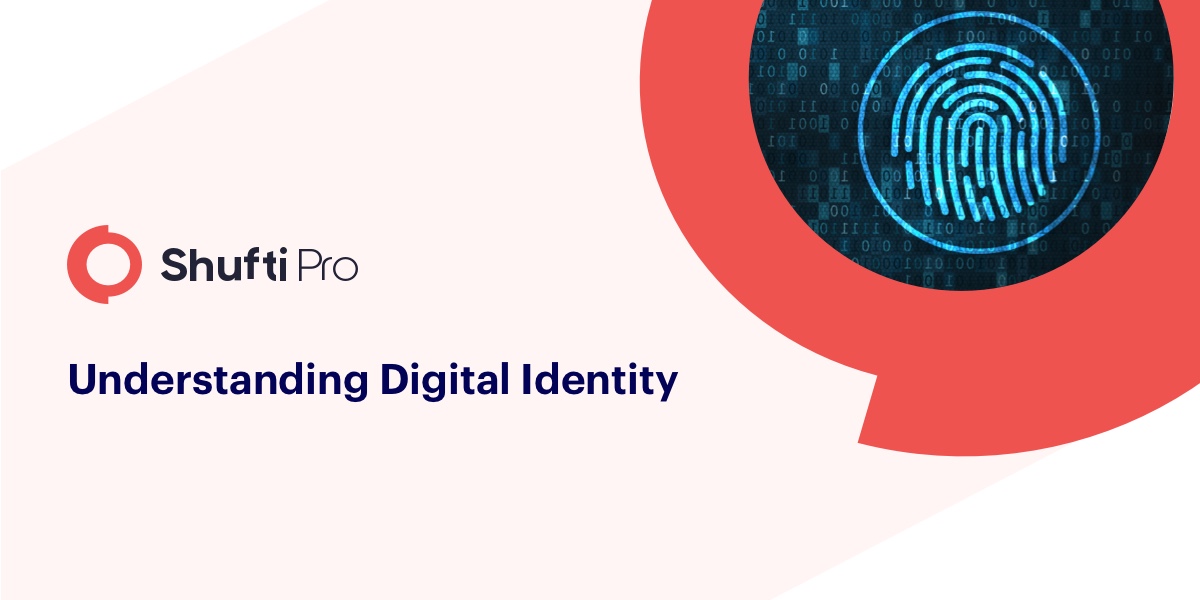Understanding Digital Identity

What is Digital Identity?
In the digital world, your identity is made up of your personal information as it exists on the web (in digital form). Your personal characteristics, such as your name, address, date of birth, bank details, email ID, biometrics and login credentials all make up your digital attributes.
Similarly, digital activities such as likes, comments, buying patterns, search histories, forum posts, and cellphone apps make up your online preferences. These are stored and tracked to maintain a record of online activity related to your identity.
In short, it is an amalgamation of all personal attributes and characteristics that link the physical existence of a person to his or her digital presence. In this respect, the term digital identity can refer to all types of online platforms and computer systems that contain information about individuals linked to their national or official identities.
This is similar to the collection of data in the real world, based on which an individual is identified and allowed to take certain actions. Official identification documents, proof of address, driver’s licenses, and other personal documents are required for transactions such as account opening or buying a property.
Verification of persons online entails matching these two forms of identities to onboard people for digital services and to confirm their presence online. Signing up for an online account, making a purchase in an e-store, accessing medical records and accepting remote jobs becomes possible with a single click and a verified digital identity.
This is known as digital authentication and is linked to the act of validating one’s identity at the time of sign up. The use of biometric technologies such as fingerprint and retina scans, as well as facial recognition, are all part of the process of cross-checking identities to validate if an individual is really who they say they are.
Establishing Trust Online
As businesses and services make a move to the digital world, crimes related to identity have also shifted platforms. Cybercriminals are learning to intercept digital accounts and steal identity to make fraudulent transactions. In the recent past, businesses and individuals have lost large amounts in losses as bad actors find innovative ways to stay ahead of tech experts and regulators at organisations and carry out online crimes.
Digital Identity information is exposed through phishing attempts, irresponsible use of login details, location sharing, public wi-fi networks, and exposure to social media malpractices. Opening up access to accounts and online services, an online identity serves as a virtual currency that is exposed to data breaches. Additionally, digital identities are also sold and used against individuals in what is known as the ‘dark web’. A well functioning online system, therefore, needs efficient processes for maintaining reliable digital identities and mitigating accompanying risks.
With impending threats of money laundering and terrorist financing, regulatory compliance in the form of KYC, AML and KYB requirements will help companies maintain trustworthy business ties online. Compliance regulations rolled out by GDPR, AMLD6 or CCPA make it mandatory for companies to opt for reliable means of verification. Strict identity checks and screening processes that verify who an individual is, and authenticate his/her access to an online portal are therefore the cornerstones of good business practice.
DIGITAL IDENTITY FRAMEWORK
A digital identity framework must offer acceptability, security and reliability, and provide a controlled flow of information, abiding by data privacy rules across the board. It is the newest and most effective solution to revolutionize compliance processes and to mitigate financial crime in the long run.
Unlocking Access to Financial Services
The advantage of establishing a digital identity network is perhaps most evident in the banking and financial institution sector. Low cost and high accuracy than traditional vetting processes, digital identities offer faster ways of complying with regulations and attributing trust to financial brokers.
KYC checks ensure that customers are genuine entities as far as their existence, personal characteristics and documentation is concerned. For AML and ongoing background checks, identities must be traceable and accessible by verification solutions. This is easily facilitated by digital identity frameworks that consolidate pieces of information based on their accuracy and validity. For banks, this saves huge amounts of money otherwise at risk of being lost due to compromised identities.
As observed, account takeover fraud is one of the most popular forms of fraud in the banking sector, with large corporate losses noted due to fraudulent transactions. Using traditional methods of identification, therefore, puts institutions at a higher risk of loss than digital identities, which can be consolidated and secured through advanced technologies such as blockchain.
As a useful proof of verification, digital identities also open up new avenues for people who have limited or no access to traditional means of identification in the real world. Close to 1 billion do not have an official identity. This has grave implications in the form of barriers to basic social services such as education, health and economic opportunities. In this respect, a consolidated digital identity has the potential to act as a safety cover for people with no access to formal financial services.
Modern organisations are upgrading to digital infrastructures and investing rapidly in safer technologies. Digital identity verification is one of the many important areas of security that require effective solutions for safer experiences online. The eventual goal is to tie the digital identity to a real person and to ensure that people are who they say they are.










